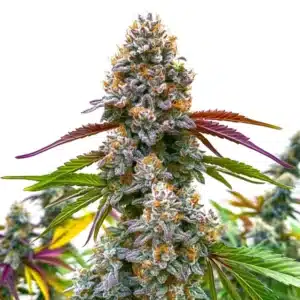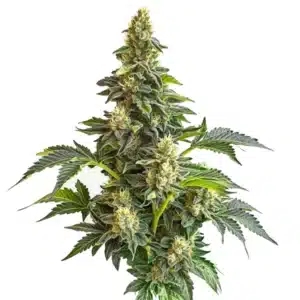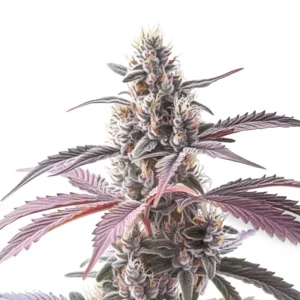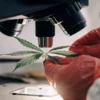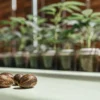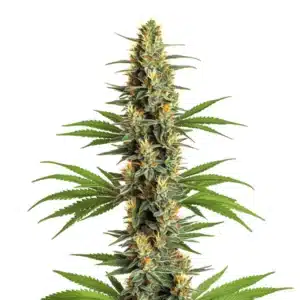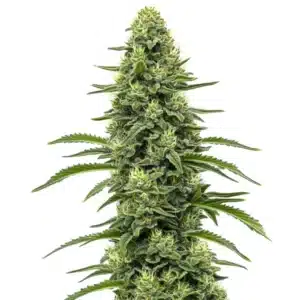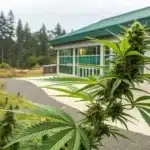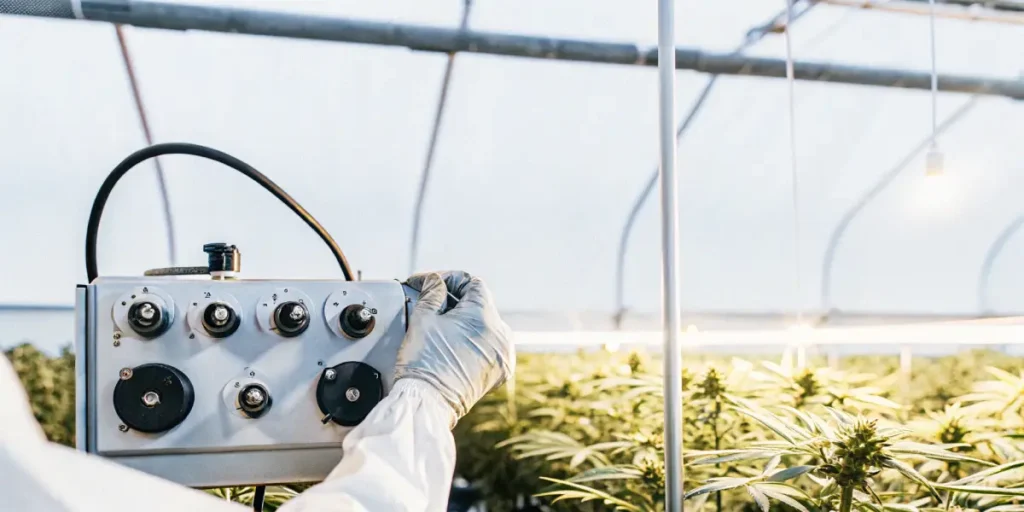
How to Manage ROS in Cannabis Grow Rooms
Reactive Oxygen Species (ROS) can be a significant challenge in cannabis grow rooms. These oxygen-containing molecules can cause stress to plants, affecting their growth and yield. They are like the weeds of the biochemical world, popping up when you least expect them. Knowing how to manage ROS in cannabis grow rooms is essential for both novice and veteran growers.
Managing ROS in cannabis cultivation facilities involves knowing their sources and effects on plant health. Whether you’re in a small indoor setup or a large commercial operation, the principles remain the same. It’s all about balance and control. By reducing ROS levels in marijuana grow rooms, you can ensure that your plants thrive and produce the best possible yields.
Recommended Strains
Critical Daddy Purple
|
|
THC | 19% (Medium) |
|
|
Type | Feminized |
|
|
Yield | High |
|
|
Phenotype | 50% Indica / 50% Sativa |
Blackberry Moonrocks
|
|
THC | 26% - 33% (High) |
|
|
Type | Feminized |
|
|
Yield | High |
|
|
Phenotype | 80% Indica / 20% Sativa |
Choosing the right cannabis strains can also help in controlling reactive oxygen species in cannabis production. Some strains are more resilient and can handle stress better than others. For example, “Critical Daddy Purple” from Blimburn Seeds offers a robust structure that can withstand varying conditions. With the right strategies for ROS management in indoor cannabis grows, you can optimize cannabis plant health significantly.
Identifying Sources of ROS in Grow Rooms
Light is a primary source of ROS in cannabis grow rooms. High-intensity lights can overstimulate the plants, leading to an increase in ROS production. This is particularly true for setups utilizing HPS or LED lights. The key is to find the sweet spot where your plants get enough light without being overwhelmed.
Water and nutrients also play a role. Overwatering or overfeeding can stress plants, leading to excessive ROS production. Balanced nutrient solutions and proper watering schedules are crucial. Just like humans need a balanced diet, plants thrive on a carefully calibrated mix of nutrients.
Additionally, environmental stressors such as temperature fluctuations and humidity imbalances can contribute to ROS production. Maintaining a stable environment is crucial for managing ROS in cannabis cultivation facilities. By investing in quality environmental monitoring equipment, growers can better control these variables, preventing unnecessary stress on their plants.
It’s important to regularly audit your grow room setup to identify potential ROS sources. By knowing where ROS might be originating, you can take proactive steps to mitigate their impact. This not only helps in reducing ROS levels in marijuana grow rooms but also enhances overall plant health and yield.
Techniques for Reducing ROS Levels
How to manage ROS in cannabis grow rooms starts with proper ventilation, a straightforward yet effective technique for reducing ROS levels in marijuana grow rooms. Proper air circulation helps dissipate excess heat and humidity, which are breeding grounds for ROS. A simple setup with oscillating fans and exhaust systems can make a big difference.
Incorporating antioxidants can also help in managing ROS. Antioxidants neutralize ROS, preventing them from causing damage. You can find antioxidant formulations specifically designed for cannabis, or use natural sources like Vitamin C and E. Just like taking a vitamin supplement, these can boost your plants’ resilience.
Implementing a robust ventilation system is a foundational strategy for ROS management in indoor cannabis grows. Regularly cleaning and maintaining ventilation equipment can further enhance its effectiveness, ensuring that air flows freely and consistently throughout the grow room.
When considering how to manage ROS in cannabis grow rooms, integrating technology such as automated climate control systems can also be beneficial. These systems can adjust conditions in real-time, maintaining an optimal environment that reduces ROS production and supports healthy plant growth.
Promos & Deals
Optimizing Environmental Conditions
Temperature and humidity control is vital for optimizing cannabis plant health by managing ROS. A consistent climate reduces stress on your plants, minimizing ROS production. Aim for a temperature range between 68-77°F (20-25°C) and humidity levels of 40-60%.
Using environmental controllers can automate this process. These devices monitor and adjust conditions in real-time, ensuring that your grow room remains stable. It’s like having a personal assistant for your plants, always keeping things just right.
Consider the use of dehumidifiers and air conditioning units to maintain ideal conditions. These devices can be crucial in preventing the buildup of moisture and heat, both of which can exacerbate ROS production. By controlling these factors, growers can maintain a healthier environment for their plants.
Besides to technological solutions, knowing the natural cycles of your plants can also aid in optimizing conditions. By aligning environmental controls with plant growth stages, you can tailor conditions to meet the specific needs of your cannabis plants, aiding in the control of reactive oxygen species in cannabis production.
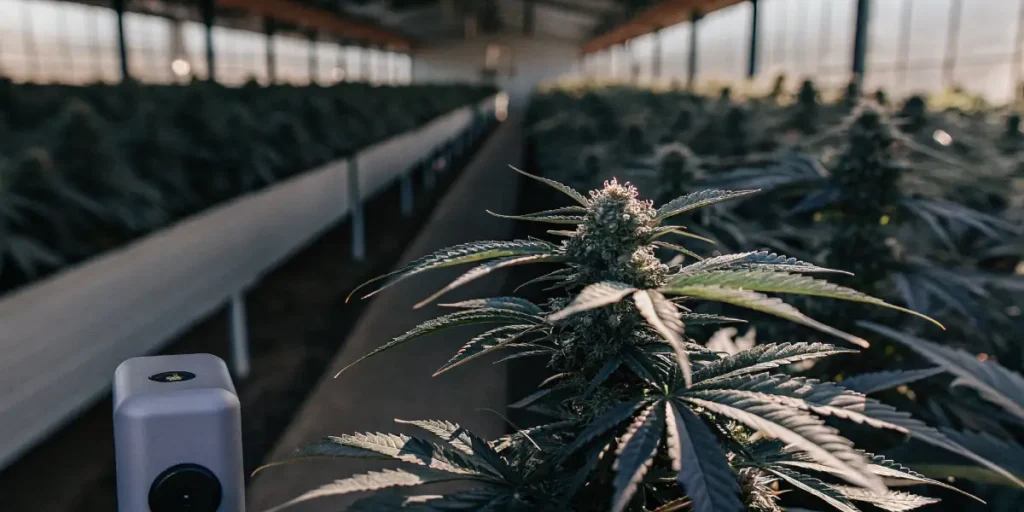
Advanced Strategies for ROS Management
Using beneficial microbes is an advanced strategy for ROS management in indoor cannabis grows. These microbes enhance nutrient uptake and strengthen plant defenses, reducing ROS stress. Products containing mycorrhizal fungi or beneficial bacteria can be added to your soil or hydroponic system.
Implementing a stress management routine is another effective strategy. This involves gradually exposing your plants to mild stress, which can make them more resilient. Think of it like training for a marathon; a little stress can build strength over time.
Another advanced strategy involves the use of biostimulants, which can enhance plant growth and resilience. These products, derived from natural substances, can bolster plant defenses against environmental stressors, thereby reducing ROS production.
Integrating genetic techniques, such as selecting or breeding strains specifically for resilience to ROS, can also be a forward-thinking approach. As the industry evolves, focusing on genetic improvements can play a significant role in long-term strategies for managing ROS in cannabis cultivation facilities.
Monitoring and Maintenance
Regular monitoring is crucial for managing ROS in cannabis cultivation facilities. How to manage ROS in cannabis grow rooms effectively starts with keeping a close eye on plant health, looking for signs of stress like wilting or discoloration. These symptoms can be indicators that ROS levels are too high.
Routine maintenance of your equipment and grow room environment can’t be overlooked. Cleanliness and efficient operation of lights, fans, and other systems help prevent unnecessary stress on your plants. This small effort can go a long way in reducing ROS levels in marijuana grow rooms.
Utilizing digital tools and software for monitoring can enhance your ability to track environmental conditions and plant health. These tools can provide real-time data, allowing for quick adjustments to mitigate ROS production effectively.
Engaging in regular training and education about new techniques and technologies can keep you informed about the best practices for controlling reactive oxygen species in cannabis production. Staying updated ensures that you can adapt to new challenges and maintain optimal plant health.
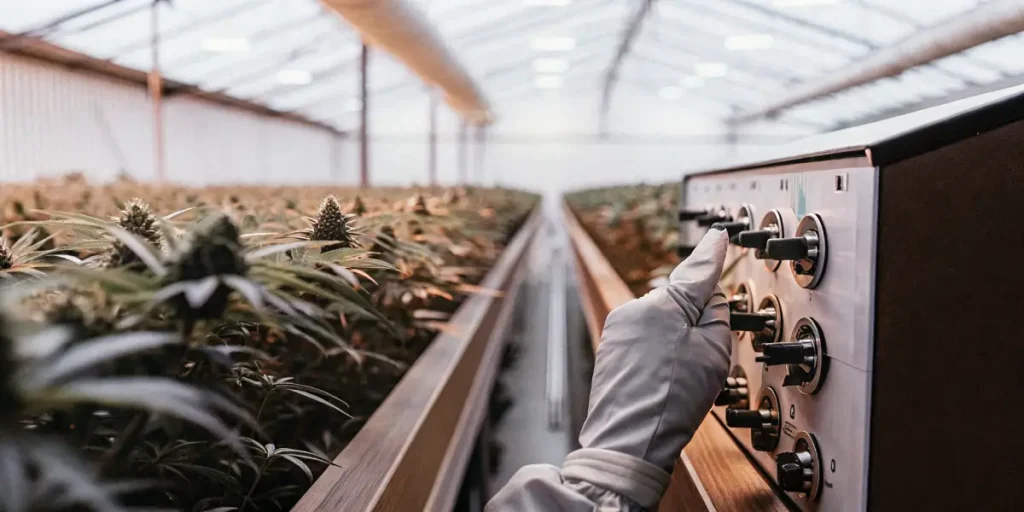
FAQs about How to manage ROS in cannabis grow rooms
What are Reactive Oxygen Species (ROS)?
Reactive Oxygen Species, or ROS, are molecules that contain oxygen and are highly reactive. They can cause damage to cells by oxidizing DNA, proteins, and lipids. In cannabis grow rooms, excessive ROS can lead to plant stress, affecting growth and yield.
ROS are naturally produced by plants during photosynthesis and metabolic processes. However, factors like high light intensity, improper watering, and nutrient imbalances can increase their production. Managing ROS in cannabis cultivation facilities is crucial for maintaining healthy plants.
Knowing the function of ROS in plant metabolism is key to developing effective management strategies. While ROS can be damaging, they also play a role in signaling pathways that can enhance plant defenses when managed correctly.
By focusing on how to manage ROS in cannabis grow rooms, growers can create an environment that minimizes negative impacts while potentially taking advantage of ROS’s beneficial signaling properties under controlled conditions.
How can lighting affect ROS levels?
Lighting is one of the primary factors influencing ROS levels in cannabis grow rooms. High-intensity lights, such as HPS and LEDs, can increase photosynthetic activity, leading to excessive ROS production. It’s important to balance light intensity with plant needs.
Using light meters to measure and adjust light levels can help. Also, consider using strains that handle high light conditions well, like “Critical Daddy Purple” from Blimburn Seeds. This can help you in controlling reactive oxygen species in cannabis production effectively.
Optimizing light schedules to mimic natural daylight cycles can also reduce ROS stress. Gradually increasing and decreasing light intensity simulates sunrise and sunset, helping to prevent sudden stress on plants.
Incorporating spectral tuning technologies can further enhance light management. These technologies allow growers to adjust light spectra to meet specific growth stages, aiding in the reduction of ROS levels in marijuana grow rooms.
Why is ventilation important in managing ROS?
Ventilation helps control the temperature and humidity levels in grow rooms, reducing stress on plants. Proper air circulation prevents heat and moisture buildup, both of which can elevate ROS levels. Simple setups with fans and exhaust systems can be very effective.
By ensuring consistent airflow, you can dissipate excess heat and prevent conditions that lead to high ROS production. This technique is a cornerstone in strategies for ROS management in indoor cannabis grows.
Regularly checking and maintaining your ventilation systems ensures they operate at peak efficiency. This includes cleaning filters and checking for blockages that might impede airflow and inadvertently increase ROS levels.
Efficient ventilation also aids in pest management by reducing conditions conducive to pests and diseases, further protecting plants from stress factors that could exacerbate ROS production.
What role do nutrients play in ROS management?
Nutrients are essential for plant growth, but imbalances can lead to increased ROS production. Overfeeding or using the wrong nutrient mix can stress plants, causing them to produce more ROS. It’s crucial to follow recommended guidelines for nutrient solutions.
Regularly testing your nutrient solution and adjusting as needed can help maintain balance. You can also use strains like “Blackberry Moonrocks” from Blimburn Seeds, which are more forgiving of nutrient variations, to help in reducing ROS levels in marijuana grow rooms.
Incorporating organic and slow-release fertilizers can provide a steady nutrient supply, minimizing the risk of overfeeding and helping to control ROS production. These options can be particularly useful for growers looking to implement more sustainable practices.
Utilizing foliar feeding techniques with carefully balanced nutrient solutions can also enhance nutrient uptake without overwhelming the plant, thus reducing ROS stress and optimizing cannabis plant health by managing ROS.
Are there natural ways to manage ROS?
Yes, natural methods can be very effective in managing ROS. Incorporating antioxidants, like Vitamin C and E, through organic fertilizers can help neutralize ROS. These act like plant supplements, boosting their natural defenses.
Additionally, using strains with natural resilience, such as “Gelato” from Blimburn Seeds, can also be a natural way to manage ROS. These strains are bred to withstand environmental stress, making them an excellent choice for growers looking to optimize cannabis plant health by managing ROS.
Integrating natural mulches and cover crops can improve soil health, thereby enhancing plant resilience against ROS. These practices promote a healthy root environment and improve the plant’s ability to withstand stress.
Companion planting is another natural strategy that can aid in ROS management. By selecting plant species that naturally repel pests or improve soil health, you can create a more balanced ecosystem that supports cannabis growth and reduces stress factors associated with ROS production.


